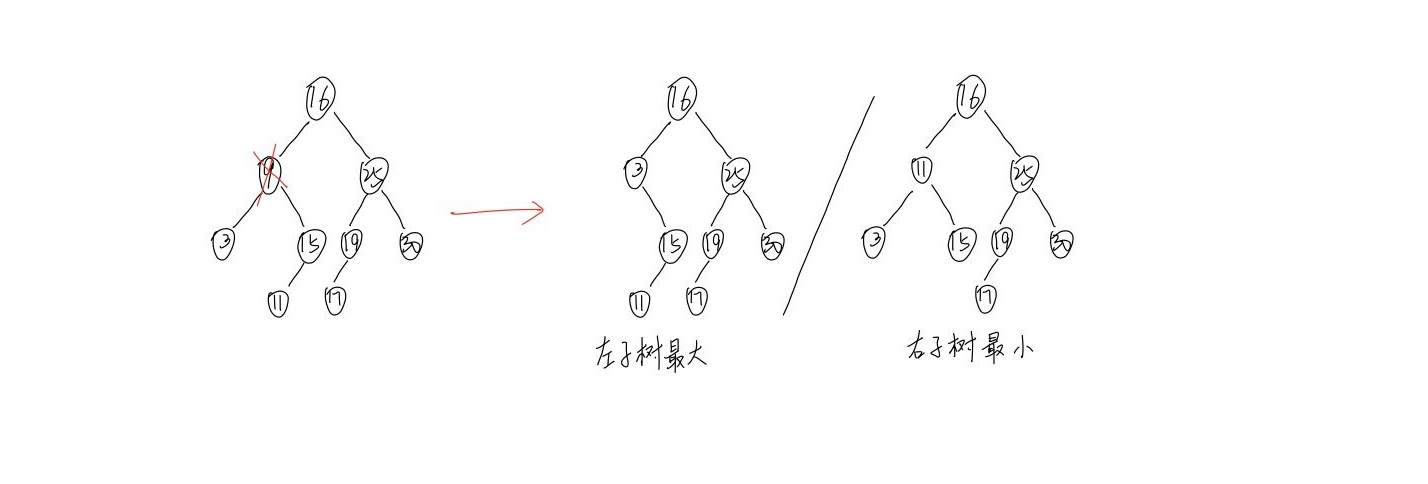二叉树的存储
1. 顺序存储结构

2.链式存储

typedef struct node
{
int data;
struct node *lchild, *rchild;
}Bitree;
二叉树的访问
先序访问
void preOrderTraveral(Bitree *node) //递归
{
if(node == NULL)
{
return;
}
printf("%d ",node->data);
preOrderTraveral(node->lchild);
preOrderTraveral(node->rchild);
}
void _preOrderTraveral(Bitree *node) //非递归
{
stack<Bitree*> s;
Bitree *tmp_node = node;
while(tmp_node!=NULL || !s.empty())
{
while(tmp_node != NULL)
{
printf("%d ",tmp_node->data);
s.push(tmp_node);
tmp_node = tmp_node->lchild;
}
if(!s.empty())
{
tmp_node = s.top();
s.pop();
tmp_node = tmp_node->rchild;
}
}
}
中序访问
void inOrderTraveral(Bitree *node)
{
if(node == NULL)
{
return;
}
inOrderTraveral(node->lchild);
printf("%d ",node->data);
inOrderTraveral(node->rchild);
}
void _inOrderTraveral(Bitree *node)
{
stack<Bitree*> s;
Bitree *tmp_node = node;
while(tmp_node!=NULL || !s.empty())
{
while(tmp_node != NULL)
{
s.push(tmp_node);
tmp_node = tmp_node->lchild;
}
if(!s.empty())
{
tmp_node = s.top();
s.pop();
printf("%d ",tmp_node->data);
tmp_node = tmp_node->rchild;
}
}
}
后序访问
void postOrderTraveral(Bitree *node)
{
if(node == NULL)
{
return;
}
postOrderTraveral(node->lchild);
postOrderTraveral(node->rchild);
printf("%d ",node->data);
}
void _postOrderTraveral(Bitree *node)
{
stack<Bitree*> s;
Bitree *tmp_node = node, *lastVisit = NULL;
while(tmp_node!=NULL || !s.empty())
{
while(tmp_node != NULL) //左节点入栈
{
s.push(tmp_node);
tmp_node = tmp_node->lchild;
}
if(!s.empty())
{
tmp_node = s.top();
s.pop();
if(tmp_node->rchild==NULL || tmp_node->rchild==lastVisit) //此节点右孩子为空或者已访问过,那么访问此节点
{
printf("%d ",tmp_node->data);
lastVisit = tmp_node;
tmp_node = NULL;
}
else
{
s.push(tmp_node);//如果有右孩子并且每访问过,再将此结点入栈
tmp_node = tmp_node->rchild;
}
}
}
}
层次遍历
二叉树的层次遍历基于广度优先搜索,在访问第n层时,一定会访问完第n-1层。
void levelOrder(Bitree *root)
{
if(!root) return;
queue<Bitree *> q;
q.push(root);
while(!q.empty())
{
Bitree tmp = q.front();
q.pop();
printf("%d",tmp->data);
if(tmp->lchild) q.push(tmp.lchild);
if(tmp->rchild) q.push(tmp.rchild);
}
}
0二叉搜索树
左子树的所有结点值均小于根结点的值;右子树的所有结点值均大于根结点的值;左子树也是二叉搜索树。
二叉搜索树的构建
typedef struct TreeNode
{
int val;
struct TreeNode *lchild, *rchild;
}TreeNode;
void Create(TreeNode *root, int tmp)
{
if(!root)
{
root = (TreeNode *)malloc(sizeof(TreeNode));
root->val = tmp;
return;
}
if(root->val < tmp)
Create(root->lchild,tmp);
else
Create(root->rchild,tmp);
}
二叉搜索树结点的删除
- 如果删除的结点只有左孩子或者只有有孩子,那么直接删除,然后把其孩子加到父节点上。

- 如果删除的结点有左孩子和有孩子,那么删除此节点后,需要将其左子树的最大结点或者右子树的最小节点替换上来。

找到二叉搜索树两个结点的最近的双亲结点
利用二叉搜索树的特点,遍历整个二叉树,如果两个节点都小于当前遍历结点,那么递归到其左子树;如果两个结点都大于当前遍历结点,那么递归到其右子树上,如果一个大于一个小于当前遍历结点,那么此结点即为其最近的双亲结点。
TreeNode* lowestCommonAncestor(TreeNode* root, TreeNode* p, TreeNode* q) {
if(root->val > p->val && root->val > q->val)
return lowestCommonAncestor(root->left,p,q);
else if (root->val < p->val && root->val < q->val)
return lowestCommonAncestor(root->right,p,q);
return root;
}
二叉搜索树的中序遍历是递增顺序
由中序和后序还原二叉树
- 后序中右起第一位3肯定是根结点,我们可以据此找到中序中根结点的位置rootin;
- 中序中根结点左边就是左子树结点,右边就是右子树结点,即[左子树结点,根结点,右子树结点],我们就可以得出左子树结点个数为int left_count = tmp - inleft;;
- 后序中结点分布应该是:[左子树结点,右子树结点,根结点];
- 根据前一步确定的左子树个数,可以确定后序中左子树结点和右子树结点的范围;
- 如果我们要前序遍历生成二叉树的话,下一层递归应该是:
- 左子树:root->left = pre_order(中序左子树范围,后序左子树范围,中序序列,后序序列);;
- 右子树:root->right = pre_order(中序右子树范围,后序右子树范围,中序序列,后序序列);。
- 每一层递归都要返回当前根结点root;
TreeNode* buildTree(vector<int>& inorder, vector<int>& postorder) {
TreeNode *root = pre_order(0,inorder.size()-1, 0,postorder.size()-1, inorder, postorder);
return root;
}
TreeNode *pre_order(int inleft, int inright, int postleft, int postright, vector<int> &inorder, vector<int>& postorder)
{
if(inleft>inright) return NULL;
TreeNode *root = new TreeNode(postorder[postright]);
int tmp = inleft;
while(inorder[tmp]!=postorder[postright]) tmp++;
int left_count = tmp - inleft; //左子树的结点个数
root->left = pre_order(inleft,tmp-1,postleft,postleft+left_count-1,inorder,postorder);
root->right = pre_order(tmp+1,inright,postleft+left_count,postright-1,inorder,postorder);
return root;
}